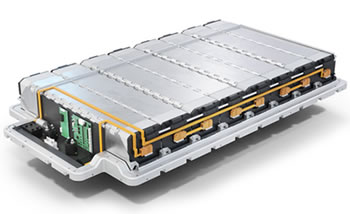Dealers, Importers & Distributors of LLLB & EV Batteries:
Producers of LLLB have responsibilities in Ireland under the Battery Regulations including registration with the Producer Register Ltd and reporting details of their supply of batteries onto the Irish market to the Blackbox on a monthly basis.
They can choose to join a Compliance Scheme or Self Comply to report on extended producer responsibility obligations including takeback and financing of the end of life of batteries.
Waste & damaged EV batteries can pose a health & safety risk. You must always refer to manufacturers instructions for safe removal & storage of these batteries. These batteries MUST be removed and isolated by qualified personnel only.

These batteries are found in three types of vehicles;
BEV - Battery electric vehicle
PHEV - Plug in Hybrid electric vehicle
HEV - Hybrid electric vehicle
How to recycle an EV battery?
To submit a waste battery collection request from a Dealer or distributor workshop, please follow the instructions below & contact WEEE Ireland at operations@weeeeireland.ie
To submit a waste battery collection request from an Authorised car dismantler or scrap yard (ATF) or from an End of life vehicle, please contact ELVES directly for safe disposal of this battery.
EV Battery Guidance
- Follow manufacturers instructions for safe removal, discharge & storage of these batteries
- Once removed, it is recommended to quarantine the battery away from the main workshop & showroom. If placing in a storage container, this container must not be adjacent to any buildings or vehicles. The container must be empty of any other product when placing an EV battery for quarantine
- If the battery is to be stored outside, it must be protected from the elements with appropriate waterproof covering
- The battery should be monitored on a regular basis. Monitoring should include thermal, odour and noise levels as these are all indicators of a potentially damaged battery. The state of charge (SoC) of the battery should also be recorded where possible. If the SoC is not available, then the battery must be considered to contain 100% charge
- Lithium Cells may appear to be intact but if damaged this may lead to Thermal runaway
- The isolated battery must be in quarantine for a minimum of 3 working days prior to requesting a collection.
- All necessary records of the battery are to be made available to WEEE Ireland (& its Subcontractors) prior to arranging a collection
- This should include information on whether the vehicle was in a collision, immersed in water, warranty replacement, end of battery life (but not the vehicle)
- An engineers report may be requested prior to completing any collection
What happens next?
- Contact WEEE Ireland with the necessary details. This is to include location, vehicle information, battery type, reported damage or issues with the unit, when was the battery removed & isolated, reason for removal etc
- Provide pictures of the battery
- Damaged Lithium batteries are extremely hazardous. Our support team will arrive with the required PPE, training and equipment to safely remove, pack & transport the unit for recycling once an a date for collection has been agreed
- Damaged Lithium batteries are subject to very stringent regulations for transport. All actors must adhere to the Carriage of Dangerous Goods by Road Regulations (ADR). In addition, shipment from Ireland to final processing plants in Europe is also subject to the International Maritime Dangerous Goods Act (IMDG)
- WEEE Ireland contractors have available the latest safe storage and transport equipment and are fully permitted to carry out the collection
- WEEE Ireland will provide a quotation / estimate for the cost of collecting & recycling the battery. A purchase order will be required prior to agreeing to a collection
- The battery will be secured and made safe for final transport to Europe. Please note that in order to keep costs to a minimum, this process may take a period of months.
- Once processed, a report will be made available to the consignor and contained within the Schemes Annual Report
